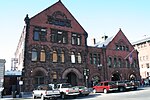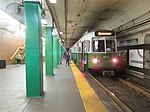Boston Architectural College

Boston Architectural College, also known as The BAC, is New England's largest private college of spatial design. It offers first-professional bachelor's and master's degrees in architecture, interior architecture, landscape architecture, and non-professional design studies including real estate development and historic preservation. The college offers continuing education credits and certificates and also hosts the BAC Summer Academy for high school students, as well as a variety of other ways for the general public to explore spatial design. It hosts spatial design exhibits and exhibits student and alumni work in its McCormick Gallery and frequently hosts conferences and symposia on spatial design. The BAC is accredited by the New England Association of Schools and Colleges (NEASC), National Architectural Accrediting Board (NAAB), Council for Interior Design Accreditation (CIDA, formerly FIDER) and the Landscape Architectural Accreditation Board (LAAB). The BAC is a member of the ProArts Consortium.
Excerpt from the Wikipedia article Boston Architectural College (License: CC BY-SA 3.0, Authors, Images).Boston Architectural College
Boylston Street, Boston Back Bay
Geographical coordinates (GPS) Address Website Nearby Places Show on map
Geographical coordinates (GPS)
| Latitude | Longitude |
|---|---|
| N 42.34792 ° | E -71.08585 ° |
Address
Patrolman James B. O'Leary Bridge
Boylston Street
02199 Boston, Back Bay
Massachusetts, United States
Open on Google Maps








